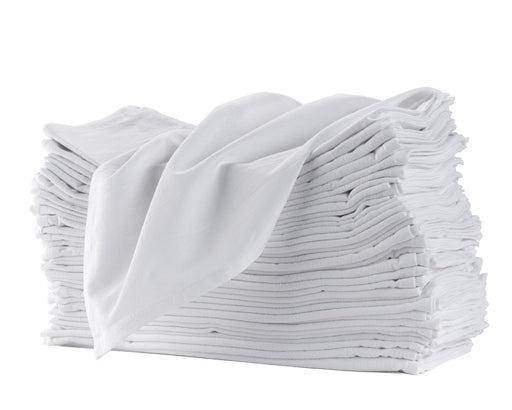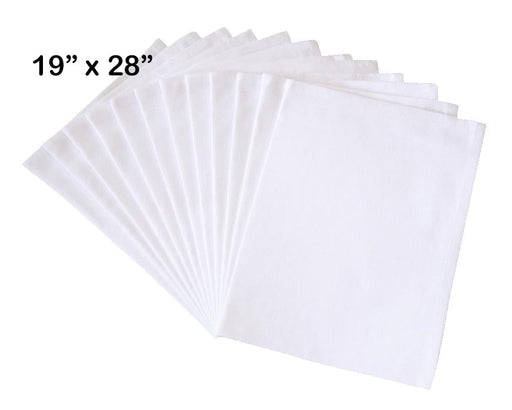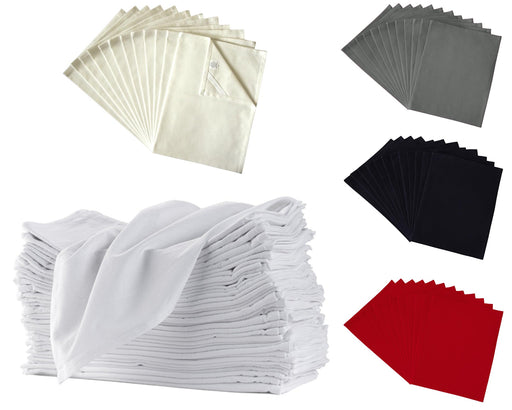Continental U.S. only.
Continental U.S. only.
Cheesecloth is one of those kitchen tools that’s often taken for granted—until you find yourself needing it for everything from straining homemade almond milk to making ricotta. But while it’s a handy tool, cheesecloth can also be a pain to clean and maintain. If you’ve ever used it once and tossed it, trust me, you’re not alone.

With a little care, though, you can reuse cheesecloth time and time again, saving money and reducing waste. I’ve got the expert tips, family wisdom, and personal hacks to make your cheesecloth last longer than you ever thought possible.
Cheesecloth, especially when used with dairy or fermenting foods, can quickly become a breeding ground for bacteria. Sally Fallon Morell, in her book Nourishing Traditions, emphasizes how essential it is to thoroughly clean kitchen tools used with raw ingredients. Without proper cleaning, residues can lead to contamination and spoil your hard work.
Similarly, Dr. Linda Harris, a food safety expert from the University of California, Davis, notes in her research that porous materials like cheesecloth can trap bacteria, especially after contact with raw foods like milk or meat. According to both experts—and confirmed by the USDA—tools like cheesecloth need special care, including boiling, to ensure they’re safe to reuse.
1. Rinse Immediately Right after using your cheesecloth, give it a thorough rinse under cold water. This helps remove any food particles before they harden and makes the full cleaning process much easier. My friend Clara, who works at a local artisanal cheese company, learned this the hard way after leaving a cloth full of curds overnight. “I’ll never do that again,” she said, laughing. Now she rinses everything right away before moving on.
2. Soak for Stubborn Stains For more stubborn bits, soaking is key. Fill a bowl with warm water and add a splash of vinegar or a spoonful of baking soda—both work wonders to break down oils and grease. Vinegar is especially great for deodorizing, which is why Sally Fallon Morell suggests using it as a natural cleaner. I’ve been using this trick for years after straining homemade almond milk, and it’s never let me down.
Plus, according to the USDA, vinegar is an effective cleaner for breaking down bacteria without using harsh chemicals, which is exactly what you want for something you’re using in food prep.
3. Hand Wash or Machine Wash? This depends on the quality of your cheesecloth. I recommend hand washing thinner cloth with mild detergent and warm water. For sturdier cloth, the washing machine is a good option, but make sure you put it in a mesh laundry bag to prevent tangling.
Clara, who goes through cheesecloth regularly at work, said that using a laundry bag saved her from having to untangle a messy knot of fabric from her work clothes one too many times. She’s all about working smarter, not harder, when it comes to washing.
4. Boil for Extra Safety Now here’s where Dr. Linda Harris’s advice comes into play. If your cheesecloth has been used for dairy or fermenting, it’s time to boil. After a good wash, bring a pot of water to a boil and let the cloth simmer for 10–15 minutes. Boiling is essential for killing off bacteria that might otherwise survive a regular wash.
I always do this after making yogurt or straining stocks, and it gives me peace of mind knowing everything is completely sanitized. The FDA also recommends boiling reusable kitchen tools that come into contact with raw food to ensure full bacteria elimination.
5. Dry It Right After cleaning, let your cheesecloth air dry by hanging it in a well-ventilated spot. This is the gentlest way to dry it and will prevent shrinking. I’ve made the mistake of using the dryer on high heat—it shrinks the fabric and compromises the fibers. If you’re in a pinch, you can use the dryer on low heat, but air drying is definitely better for the long run.
6. Store It Safely Once dry, fold your cheesecloth neatly and store it in a sealed plastic bag or container. My grandma used to wrap hers in an old cotton napkin and store it in a cool, dry place—simple but effective. She was all about keeping things organized in her kitchen, and this little habit ensured her cheesecloth was always clean and ready to go.

Speaking of Clara, she ran into an issue a while back when her cheesecloth wasn’t straining as effectively as it used to. She was using it to make ricotta, but the cloth had become clogged with grease and residue over time. After trying to hand wash it with no success, she consulted her colleagues at work. Turns out, the oils from the cheese were blocking the fibers. A long soak in vinegar, followed by boiling, revived her cheesecloth, and it’s been working like new ever since.
My grandma always had a cheesecloth drying in the kitchen—she used it for everything, from straining jams to wrapping herbs. One of her best tricks? After using the cheesecloth for fatty broths or cheeses, she’d soak it in a lemon juice and water solution. “Lemon cuts through the fat, and it keeps the cloth smelling fresh,” she’d say. And you know what? She was right. I still do this, especially after making stock, and it keeps the cheesecloth from holding onto those strong smells.
Aside from the money you’ll save, taking care of your cheesecloth is a step toward sustainability. Sally Fallon Morell talks a lot about reusing kitchen tools in her work, and cheesecloth is a prime example of something that, when cared for, can last for years. When it does eventually wear out, if it’s made from natural fibers, it can be composted.
I love that by taking care of it, I’m cutting down on waste. Plus, it’s one less thing to worry about when you’ve got a reusable, sustainable tool that’s always ready to go.
Caring for cheesecloth might seem like an afterthought, but it’s the key to keeping this versatile tool around for as long as possible. With tips from experts like Sally Fallon Morell and Dr. Linda Harris, and a few tried-and-true tricks from Clara and my grandma, you can make your cheesecloth last through batch after batch of homemade creations.
The process is simple: rinse, soak, wash, boil, dry, and store. Follow these steps, and you’ll never have to toss a cheesecloth after one use again. It’s a small change that can make a big difference in your kitchen.

If you need red, gray, blue or black color please click here. ★ Multipurpose, available white or natural colors (unbleached), matching, wholesale ...
View full details
★ Current production time is 3-4 weeks. RE-SELLERS/WHOLESALERS/DESIGNERS: Please contact us for our wholesale prices if your volume is more than 1...
View full details
100% Cotton, comes in white (bleached) and natural (unbleached) color A uniform 19" x 28" rectangle, 130 thread count, flour sack napkins hemmed...
View full details
100% Cotton A uniform 27" x 27" square, 130 thread count, 3 oz each heavyweight flour sack dish towels and hemmed on all sides A corner loop for...
View full details
Attention Re-sellers, Wholesalers, and Designers: If you need to order more than 100 pieces, please contact us for our special wholesale prices. Pr...
View full details